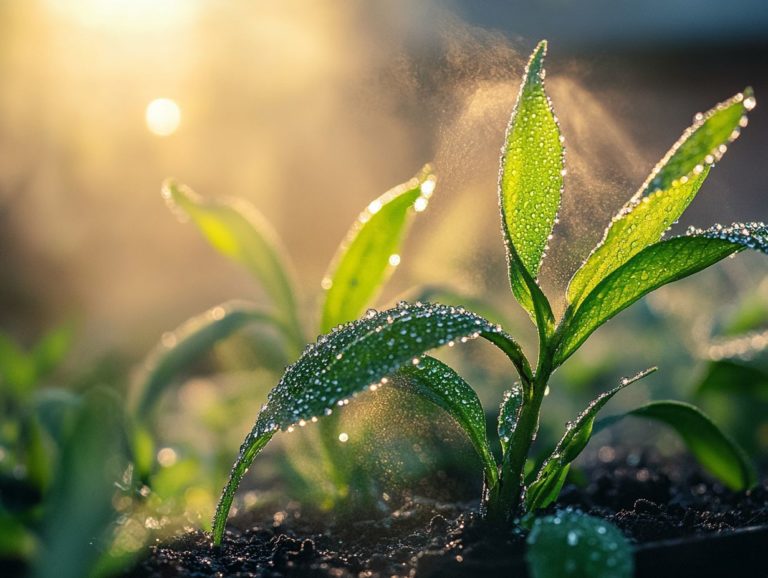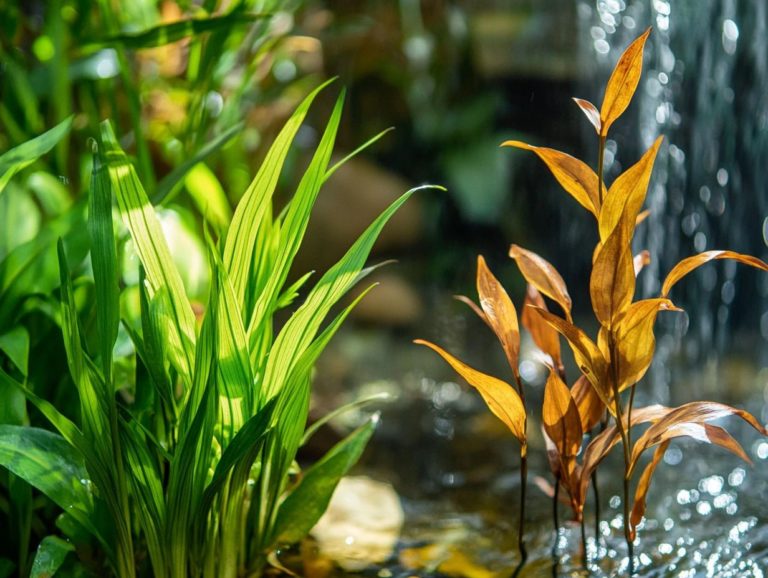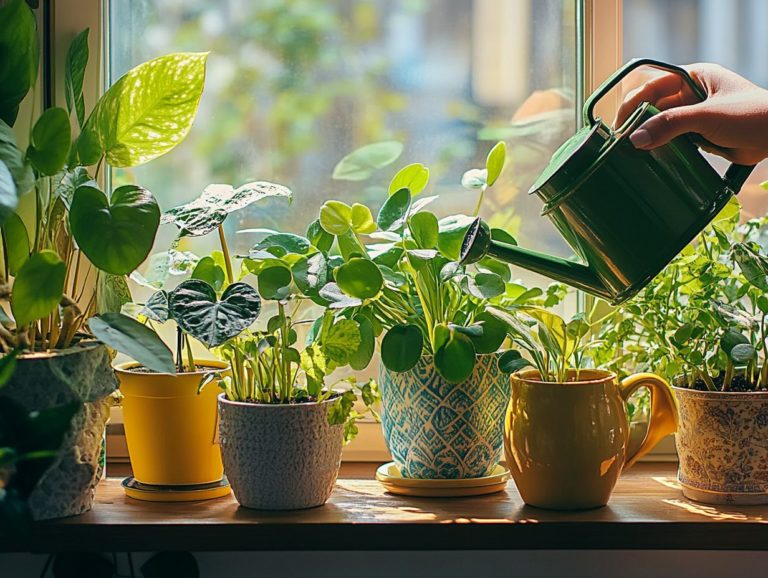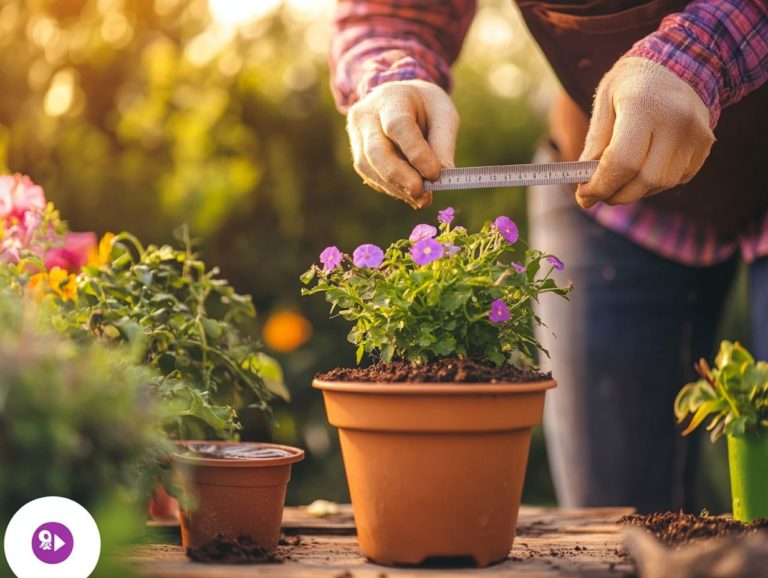The Role of Humidity in Plant Watering
Humidity plays an essential role in the health and growth of your plants. It influences everything from water absorption to nutrient uptake.
By understanding how humidity impacts your plants, you can tailor your watering practices for optimal growth. This article delves into the nature of humidity, its effects on plant water requirements, and the ideal humidity levels for various plant types.
You’ll also find practical tips on measuring humidity and adjusting your watering schedules accordingly. Take your plant care to the next level!
Contents
- Key Takeaways:
- Understanding Humidity and Plant Watering
- Effects of Humidity on Plant Growth
- Optimal Humidity Levels for Plants
- Mastering Humidity Measurement for Thriving Plants
- Tips for Watering Plants in Different Humidity Levels
- Frequently Asked Questions
- What is the role of humidity in plant watering?
- How does humidity affect plant transpiration?
- Do plants need to be watered differently based on the humidity level?
- Is high humidity always beneficial for plants?
- Can humidity levels change throughout the day?
- How can I measure humidity levels for my plants?
Key Takeaways:
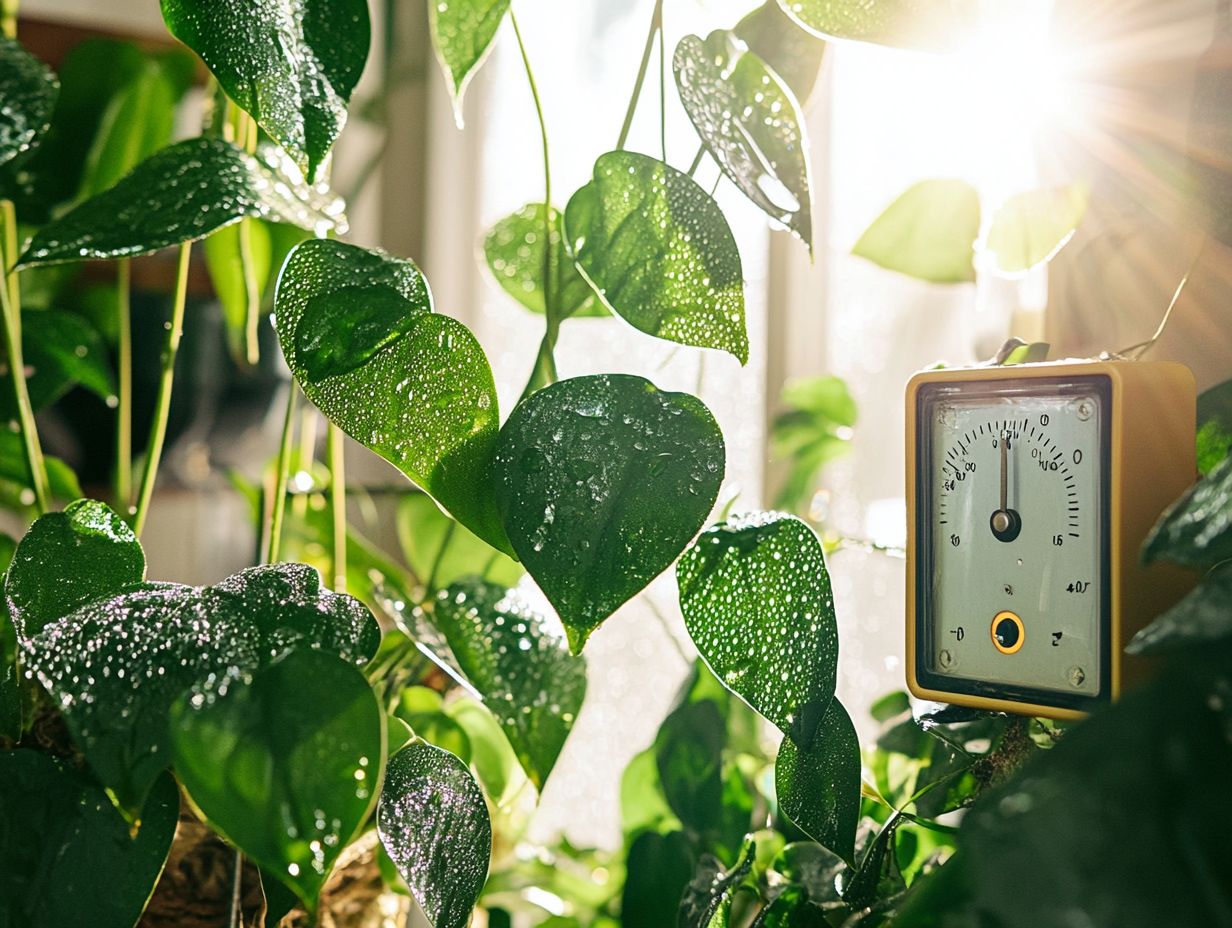
- Humidity plays a crucial role in plant growth and water needs.
- The ideal humidity range for plants varies based on the type of plant.
- Regularly measuring humidity and adjusting watering schedules can help maintain a healthy balance for plants.
Understanding Humidity and Plant Watering
Understanding humidity and its impact on plant watering is essential for optimizing your plants’ health and overall yield. In precision horticulture, maintaining the right humidity levels supports vital processes such as photosynthesis and transpiration. This ensures that your plants effectively absorb nutrients.
With proper water management enhanced by smart and dynamic controllers you can create an ideal environment for a variety of plant types. This helps to mitigate issues related to environmental conditions and moisture deficits. Understanding the relationship between humidity, plant health, and potential threats like fungal diseases is crucial for successful cultivation.
What is Humidity?
Humidity refers to the amount of water vapor in the air, expressed as a percentage known as relative humidity. This factor significantly shapes the environmental conditions that impact plant growth.
To truly grasp humidity, you need to understand both absolute and relative humidity. Absolute humidity measures the actual mass of water vapor in a specific volume of air. In contrast, relative humidity indicates how much water vapor the air can hold at a given temperature compared to its full capacity.
Fluctuations in humidity levels can directly affect air quality, leading to discomfort and productivity challenges for both people and plants. For example, low humidity can cause plants to lose moisture quickly, increasing their water requirements. Conversely, high humidity can create a breeding ground for mold, compromising not only plant health but also overall air quality. Understanding the importance of humidity is essential for maintaining a healthy environment.
Thus, keeping a close eye on humidity levels is essential for maintaining balanced ecosystems and ensuring your crops thrive.
Effects of Humidity on Plant Growth
The impact of humidity on plant growth is significant. It shapes vital physiological processes like transpiration, nutrient uptake, and photosynthesis. These elements are crucial for achieving optimal plant development and maximizing yield.
Understanding this relationship enables you to cultivate healthier and more productive plants.
How Humidity Affects Plant Water Needs
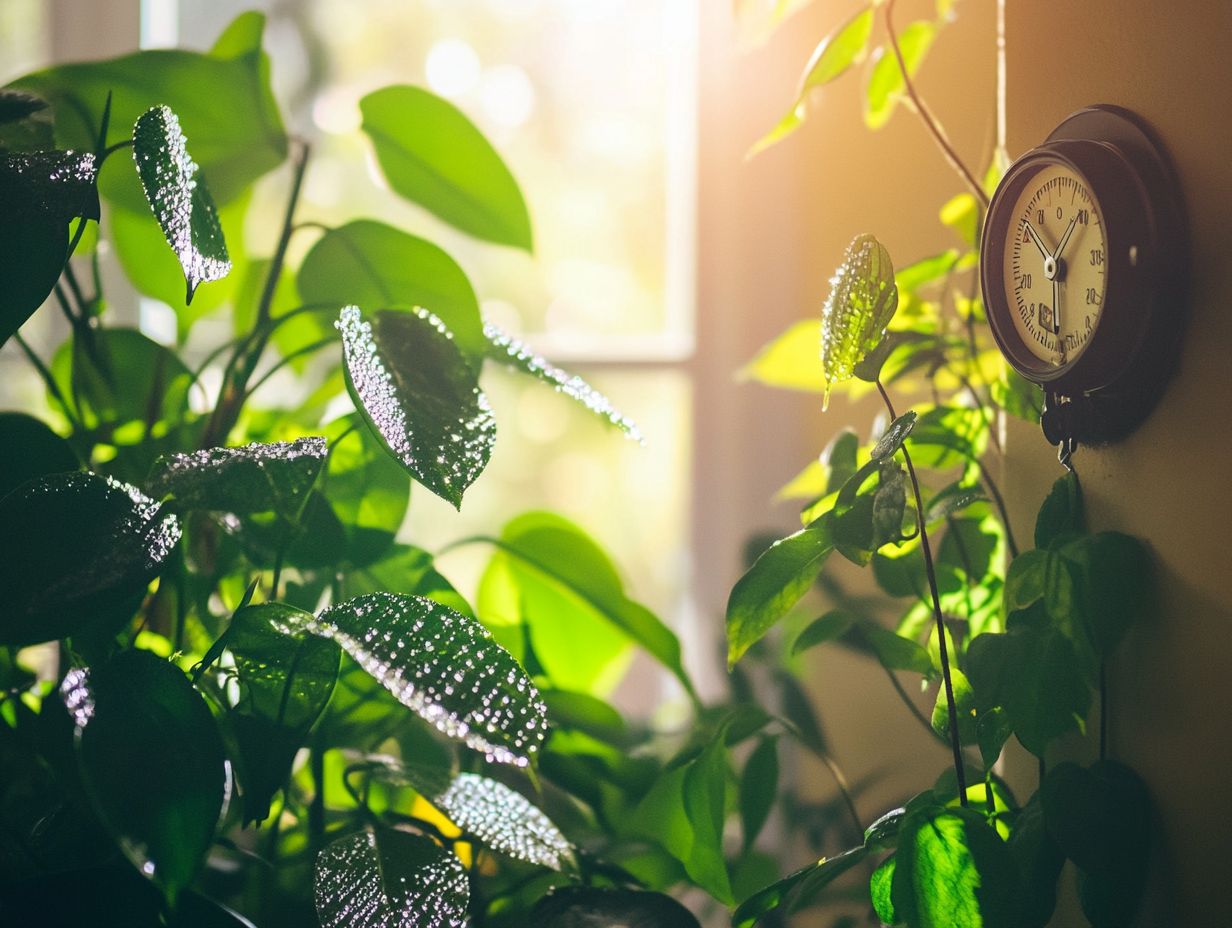
Humidity plays a crucial role in determining your plants’ water needs. When humidity levels are high, transpiration rates drop, allowing your plants to retain moisture more effectively. However, this can also lead to excess moisture, increasing the risk of fungal diseases.
When humidity is low, your plants may lose water more rapidly through transpiration, making it difficult for them to stay adequately hydrated. This creates a challenging environment where plants might struggle to flourish.
As a gardener or farmer, it s imperative to monitor moisture levels closely. By managing water availability, you can help ensure that your plants thrive, carefully balancing the extremes to avoid any detrimental effects.
Optimal Humidity Levels for Plants
Identifying the ideal humidity levels for different plant types is crucial for fostering vigorous growth and enhancing their resilience to environmental stresses and diseases.
By understanding the specific needs of each plant, you can create an environment that supports their health and vitality.
Start monitoring your humidity levels today to boost your plant health!
Ideal Humidity Range for Different Plant Types
The ideal humidity range varies significantly among different types of plants. Many leafy vegetables, like lettuce, thrive at a relative humidity of 50% to 70%. These greens appreciate moderate moisture levels to encourage growth and prevent wilting. However, other plants have their own unique requirements.
Take tropical plants, for instance. Ferns and peace lilies flourish in a more humid environment, ideally between 60% and 80%. This elevated humidity is key to maintaining their lush foliage and vibrant colors. On the flip side, succulents, which store water in their leaves, thrive in a much drier atmosphere, often preferring humidity levels as low as 30%.
Understanding these variations is essential. When plants stray from their optimal ranges, their health can suffer, impacting overall productivity and resilience.
Mastering Humidity Measurement for Thriving Plants
Measuring humidity for plant care is a game changer for thriving plants! You have a range of tools and techniques at your disposal to accurately monitor humidity levels in various environments, ensuring your plants thrive.
Tools and Techniques for Measuring Humidity

You can use various tools and techniques, including smart controllers and dynamic controllers, to measure humidity with precision and efficiency. This ensures the ideal growing conditions for your plants.
Digital hygrometers stand out as particularly effective tools. They offer real-time data on humidity levels, allowing you to make immediate adjustments in response to fluctuations. These devices often feature high and low alerts that notify you when humidity levels drift outside the optimal range.
In controlled environments like greenhouses or indoor gardens, utilizing these tools alongside a data logging system enables you to track humidity changes over time. This approach not only enhances the overall health of your foliage but also fosters proper growth, effectively preventing stress-related issues such as wilting or mold development.
Tips for Watering Plants in Different Humidity Levels
When it comes to watering plants, understanding the details of humidity levels is essential for cultivating effective practices that promote optimal plant health while preventing lack of moisture.
Adjusting Watering Schedule Based on Humidity
Adjusting your watering schedule based on humidity levels is crucial for maintaining optimal plant health and preventing moisture deficits, especially when environmental conditions are in flux.
By closely monitoring local humidity, you can fine-tune your watering practices to align with the specific needs of your plants. For example, during periods of high humidity, it may be wise to reduce both the frequency and volume of water applied. This allows the soil to dry out slightly, helping to prevent root rot. Understanding the science of watering indoor plants can further enhance your care techniques.
On the other hand, during dry conditions, increasing the water volume in each session ensures that your plants receive the hydration they require. Implementing a strategy that accounts for humidity changes not only cultivates a healthier growing environment but also bolsters overall plant resilience, allowing them to better withstand various stressors. Additionally, understanding the role of soil in watering can further enhance your watering techniques.
Frequently Asked Questions
What is the role of humidity in plant watering?
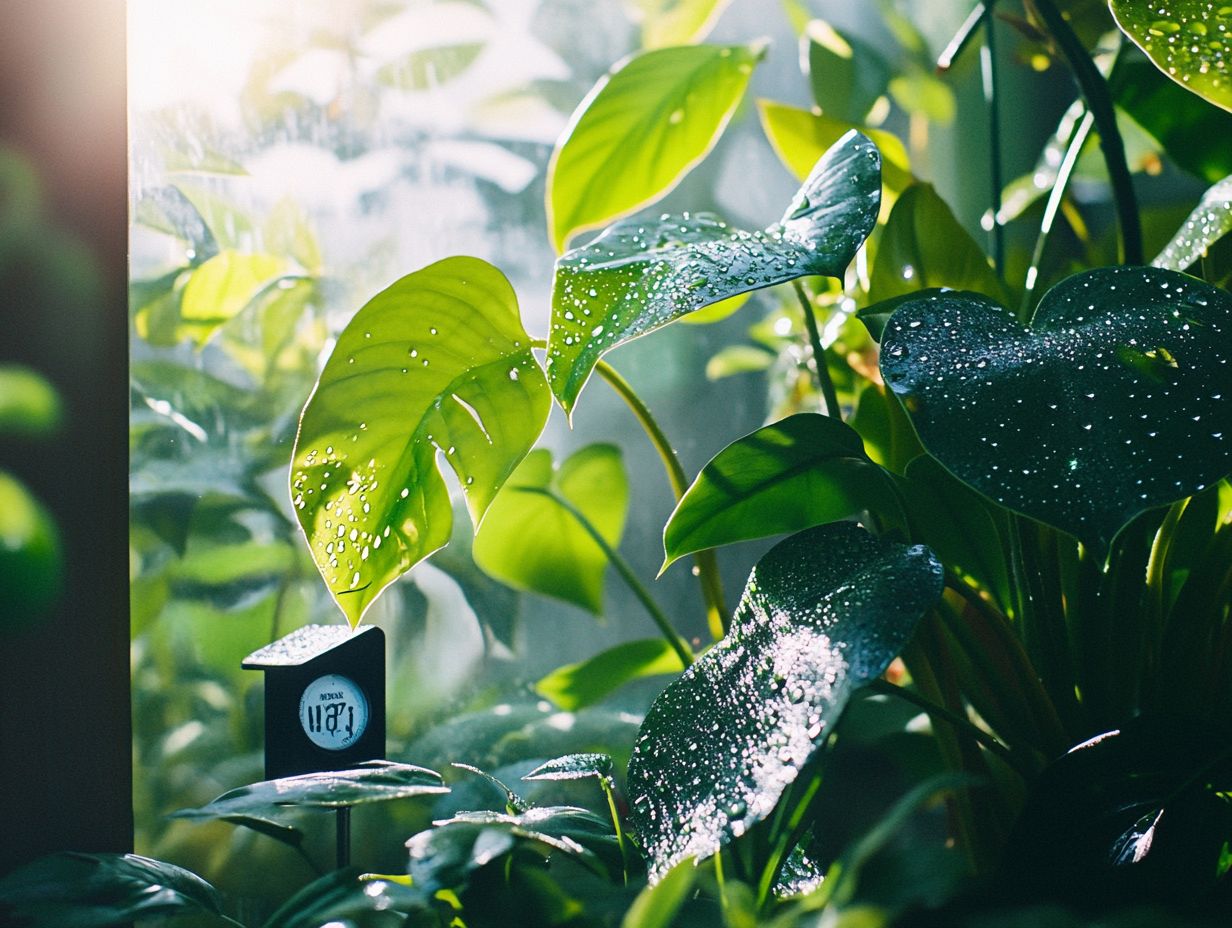
Humidity plays a critical role in plant watering as it affects the amount of water plants lose through transpiration, which is how plants lose water through their leaves.
How does humidity affect plant transpiration?
High humidity levels decrease transpiration, meaning plants lose less water. Conversely, low humidity levels increase transpiration, causing plants to lose more water and potentially become dehydrated.
Do plants need to be watered differently based on the humidity level?
Yes, plants should be watered differently depending on the humidity level. If humidity is high, plants may not need to be watered as frequently. If humidity is low, plants may need to be watered more often to prevent dehydration.
Is high humidity always beneficial for plants?
No, high humidity can lower water loss in plants, but it may also lead to a damp environment. This can encourage the growth of fungus and diseases.
Can humidity levels change throughout the day?
Yes, humidity levels fluctuate daily based on weather and time. These changes can impact how much water plants lose, so you might need to adjust your watering schedule.
How can I measure humidity levels for my plants?
You can measure humidity with a hygrometer, a tool designed for this purpose. Alternatively, check a weather app or an outdoor thermometer that shows humidity levels.



